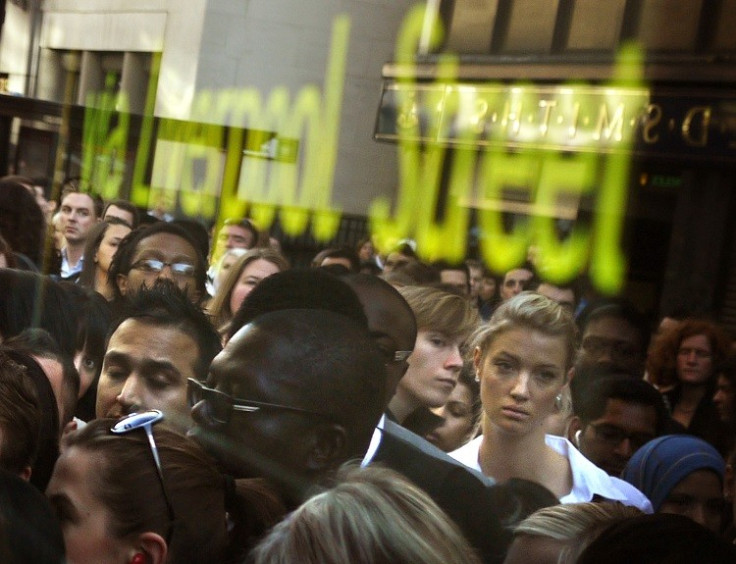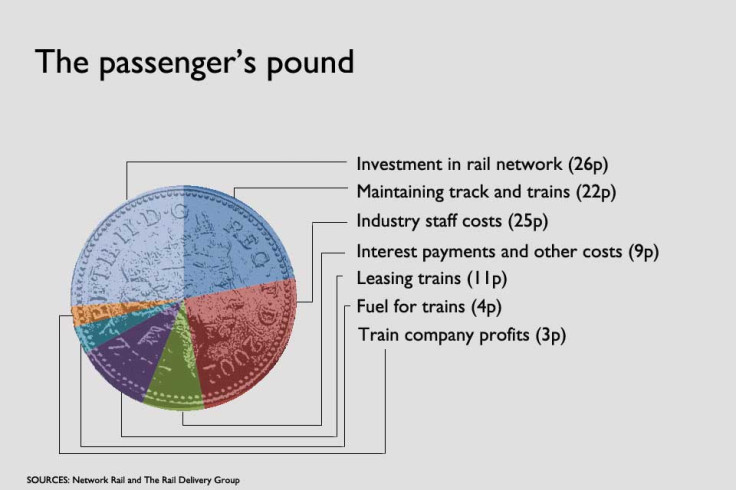UK rail fares price hike: What does passengers' cash actually get spent on?

There's no better way to start the year than an above-inflation rise in train fares, the perfect antidote to all that Christmas cheer and fresh-start optimism
On average, regulated train fares went up by 2.5% on 1 January 2015, lower than in previous years but still more than double inflation and wage growth.
Everyone's annoyed. Consumers for having to pay more. Train companies and the government for shouldering the blame. Why exactly do our fares keep going up so much and what's it all paying for?
The biggest chunk of the "passenger's pound" goes towards investment in the rail network, according to Network Rail and the Rail Delivery Group: 26p.
In recent years, the government has shifted more of the the burden of rail infrastructure investment, like new stations and upgrading track, from taxation onto fares.
They argue that it's only fair rail users contribute a larger share towards investing in the system, though critics say the whole economy benefits from a better rail infrastructure, not just passengers.
Under the government's rail regulation, some fares can go up by above inflation each year, which they usually do. Because of cost of living concerns – pay has been in real terms decline for several years – the government capped the annual rise in regulated rail fares of 2.5%. It was 4.1% the year before.
The Department for Transport said there is £38bn of investment in the railways planned in the five years from 2014-19, including the electrification of 850 miles of track and upgrades to make journeys between key northern cities quicker.
They say it is the largest and most ambitious investment programme in Britain's railways since the network's Victorian heyday, when it was the best in the world.
Much of the ageing Victorian infrastructure is still in place, despite it being unsuitable for the country's modern rail needs, such as high speed trains.

Because of its age and the pressures put upon it, the network needs to be heavily maintained. Figures from the Office for Rail Regulation show there were 1.5 billion passenger journeys in 2012, a number growing every year.
That's why 22p of the passenger's pound is spent on maintaining trains and track. A quarter of the passenger's pound, 25p, is spent on staff costs: there are around 190,000 people employed in the UK rail industry.
One of the things people find most galling about annual rail fare rises is that the train companies make profits.
To many, who have no choice but to use trains to get to work, this is evidence of profiteering. But train companies argue they are private businesses entitled to make a profit, and that the profit they make is not large. Of the passenger's pound, 3p is profit for the train companies.
Perhaps most surprising is the 11p that goes on leasing trains. The train operating companies in the UK tend not to own any rolling stock, instead renting it from companies which own and maintain the trains for the duration of their contract.
Because train companies have to tender for the contract to operate on certain lines, which expire after several years when a new tendering process by the government begins, they hire rather than buy rolling stock as it's cheaper. This all adds on to the passenger's fare.
© Copyright IBTimes 2025. All rights reserved.






















